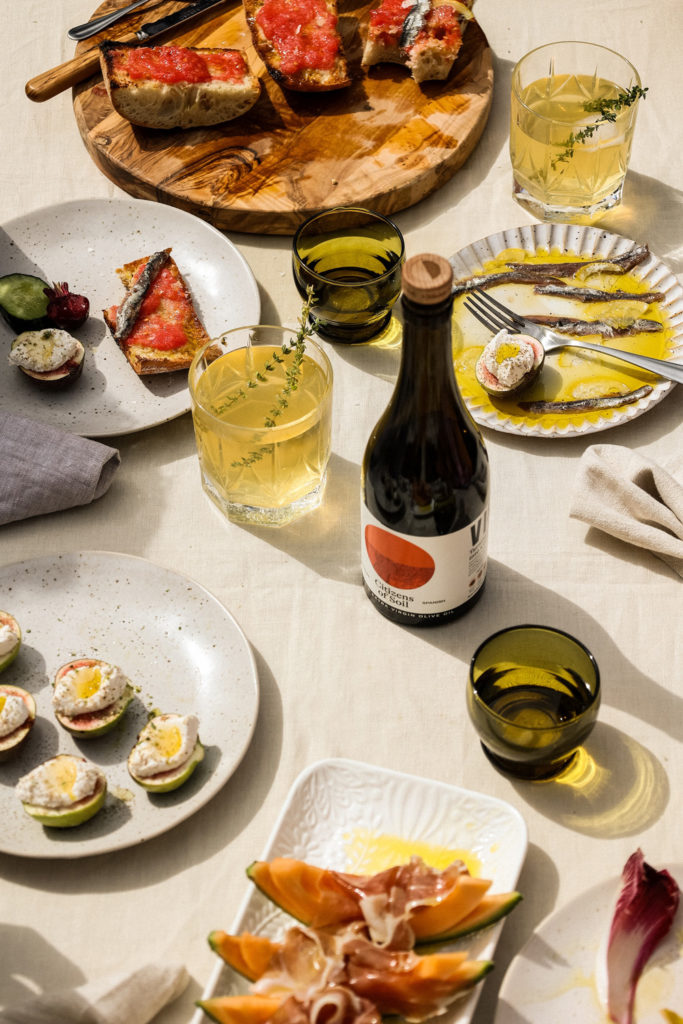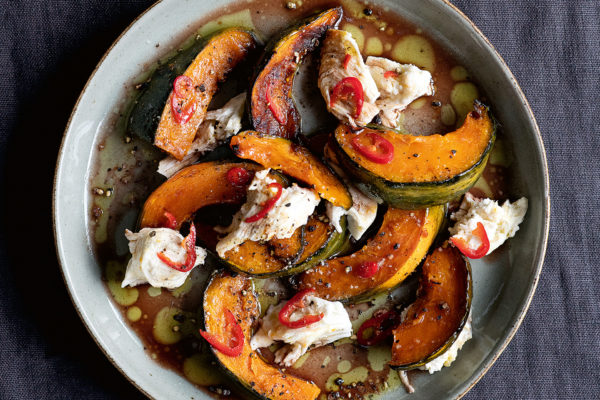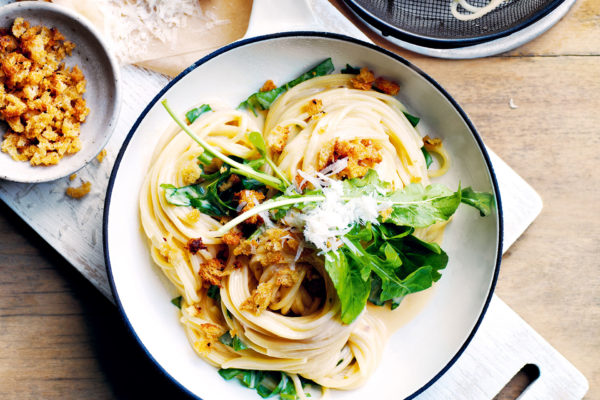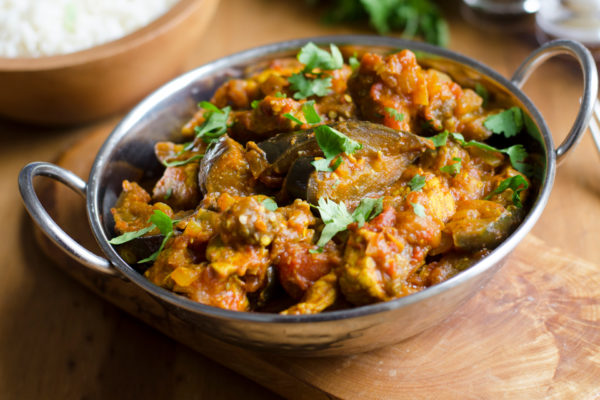3 Caribbean-Inspired Recipes From Riaz Phillips
By
2 years ago
This new cookbook is a celebration of Caribbean culture
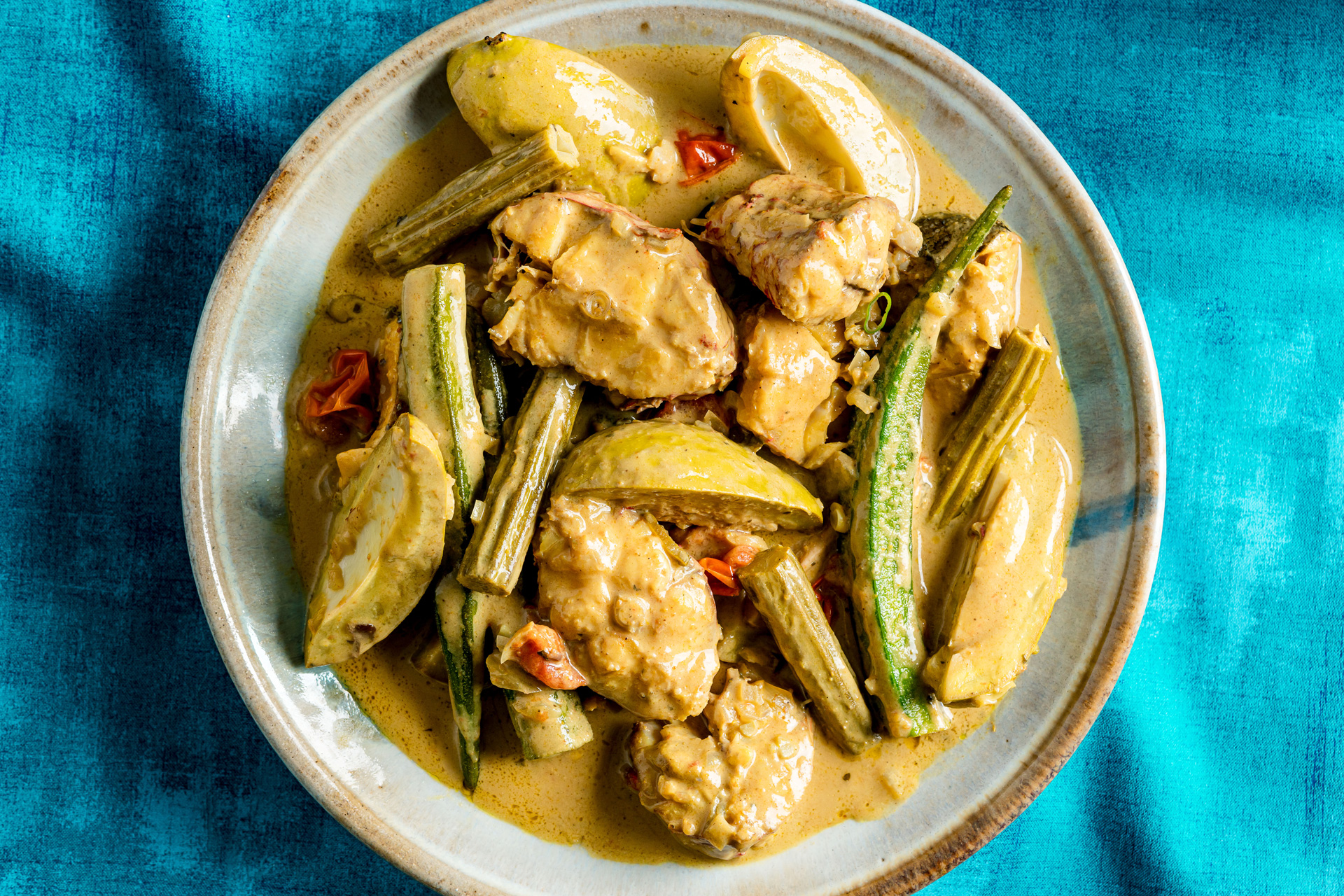
The latest book from food writer Riaz Phillips, East Winds: Recipes, History and Tales from the Hidden Caribbean, delves into the lesser-known stories and recipes from his heritage. ‘Many Caribbean families like mine in Britain don’t just come from one country,’ he tells us. ‘My extended family hail from Jamaica, Trinidad & Tobago, Grenada, Guyana and more. A lot of times in Britain, Caribbean food has been conflated with Jamaican food even though the foods seen in the likes of Guyana and Trinidad can be vastly different from Jamaica. This is what the book is about.’ Here, we share three of the recipes from the book, which are suitably comforting and hearty as we come into autumn.
3 Caribbean-Inspired Recipes From Riaz Phillips
Riaz Phillips’ Brown Stew Chicken
Serves 6
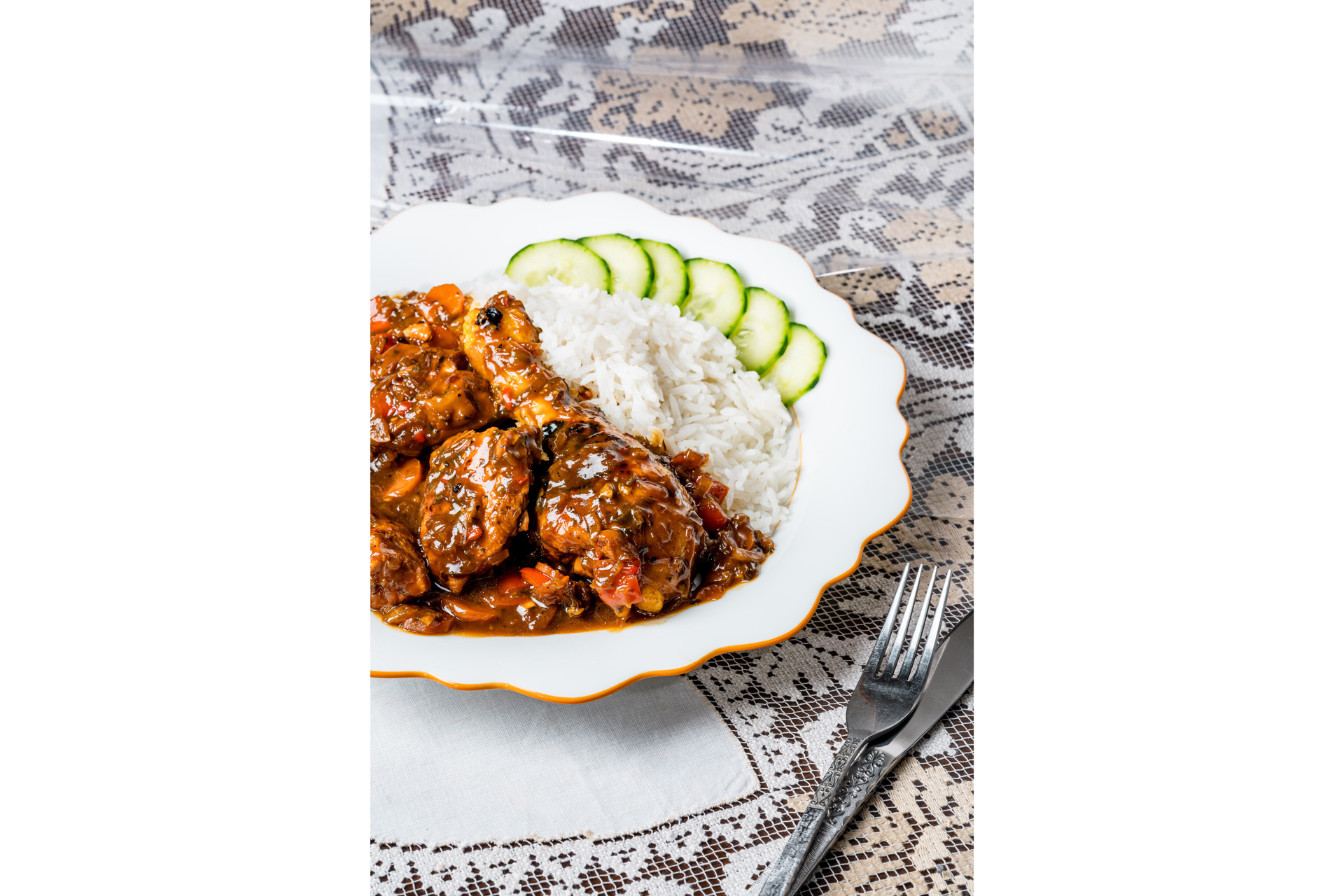
Caitlin Isola
Ingredients:
- 1.5kg (3lb 3oz) chicken, cut to desired size, or pieces of choice (I buy a whole chicken and skinless thighs)
- 5 tbsp cooking oil of choice
- 3 tbsp brown sugar of choice
- 200ml (scant 1 cup) hot water
For the marinade
- 3 tbsp green seasoning (see below)
- 1 tsp salt
- 1 tsp freshly ground black pepper
- 1 onion, finely chopped
- 1 spring onion (scallion/green onion), finely chopped
- ½ Scotch bonnet pepper, deseeded and chopped
- 3 tbsp tomato ketchup
- 1 tsp dark soy sauce or Worcestershire sauce
- 2 sprigs of thyme (optional)
For the vegetables (optional)
- ½ red bell pepper, deseeded and chopped
- ½ tomato, diced
- ½ carrot, peeled and sliced into rounds
Method
- In a large bowl, add the chicken and marinade ingredients and stir to combine. Marinate for a few hours or overnight, although you can also use straight away.
- In a large frying pan, Dutch pot or heavy-based saucepan, heat the oil over a medium–high heat. When hot, add the sugar to the centre and cook for 2–3 minutes until it starts to bubble and the edges start to turn dark brown. Turn the heat down a notch to medium and add
- the contents of the chicken seasoning bowl and begin to stir and mix to coat and combine with the sugar. Continue to cook, stirring intermittently, for 10 minutes, at which point you should see some of the fat from the chicken. Add the hot water and optional vegetables, cover and cook for 10 minutes, then remove the lid, turn the heat down to medium–low and cook for a final 10 minutes, or until the gravy reaches your desired consistency. Remove the thyme sprigs, if used.
- Serve with white rice, Bhaji Rice, Nasi, or Rice & Peas.
NOTE: When stirring the chicken, avoid touching or scraping the sugar with your utensil at the start or it may stick and be hard to shake off.
Riaz Phillips’ Dosti Roti
Makes 8-10
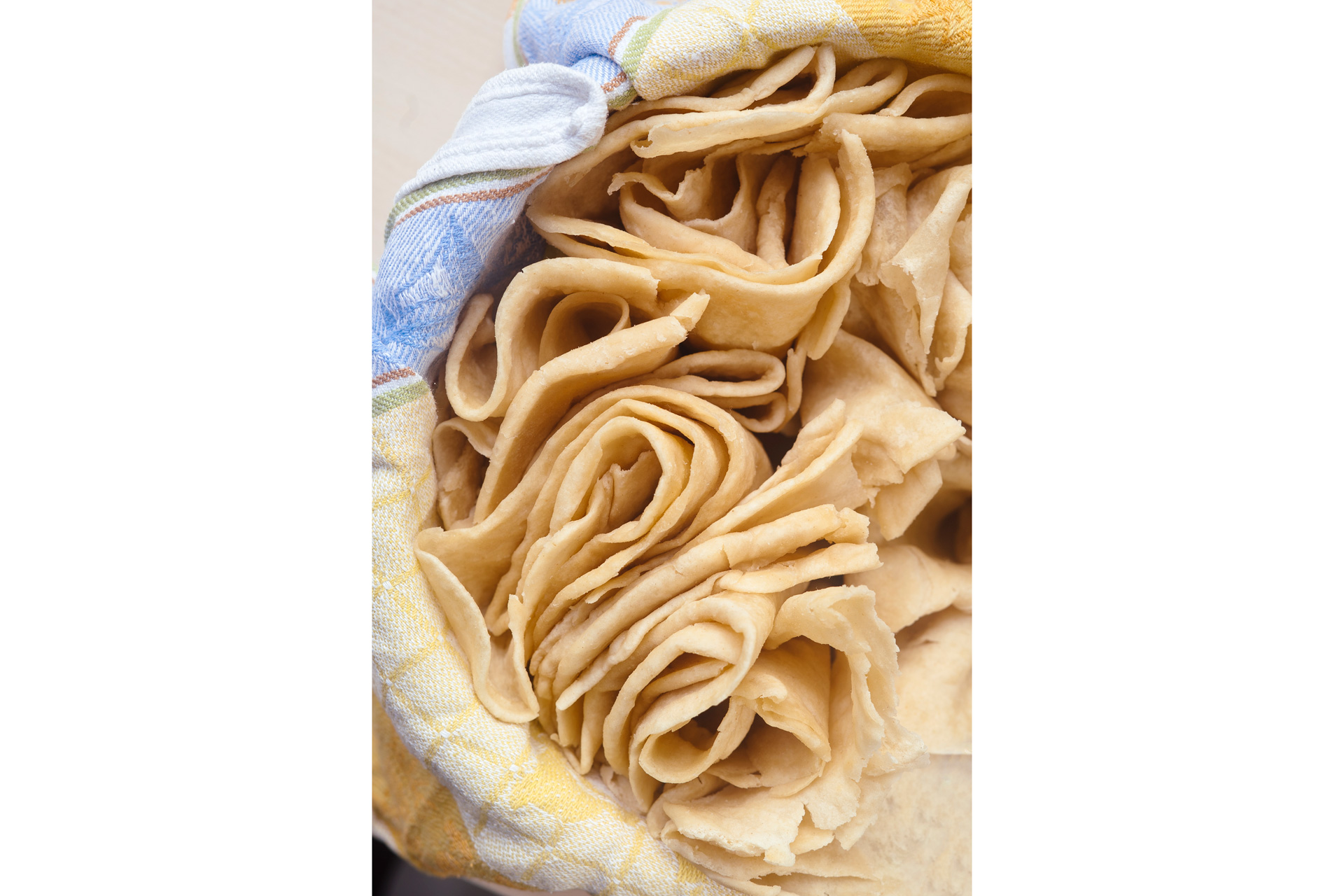
Riaz Phillips
Ingredients:
- 750g (5 ¾ cups) plain (all-purpose) flour, plus extra for dusting
- 2 tsp baking powder
- 1 tsp sea salt
- 2 tsp granulated brown sugar (optional)
- 400ml (13/4 cups) warm water
- 4 tbsp unsalted soft butter or cooking oil of choice
- 80ml (⅓ cup) cooking oil of choice
Method:
- In a large bowl, sift the flour, baking powder, salt and sugar, if using. Slowly add the warm water and knead until the mixture comes together in a dough. Don’t fold the dough, rather roll it around the bowl while squeezing and pressing it. Roll it around the edges so it wipes up all the flour. The dough should be slightly moist to the touch and for this recipe it’s fine if the dough is sticking to the bowl a tiny bit. Cover with cling film (plastic wrap) or a damp dish towel and leave to rest for at least 15 minutes.
- Separate the dough into 8–10 equal-sized chunks (loyas), weighing about 120–130g (4 ¼ – 4 ½ oz) each and cover the ones you aren’t shaping. Flour a flat surface and then take two dough balls and flatten them out with your fingers. Roll out each one into a circle about 20cm (8in) in diameter.
- Take one disc and brush with 1 tablespoon of butter or oil, then sprinkle over a dash of flour. Next, take the second disc and place on top of the first like a sandwich. Gently align and press down around the edges. Roll out into a circle about 25–30cm (10–12in) in diameter. When you are ready to cook, heat your tawa or non-stick frying pan over a medium heat. Test your pan with a splash of water and if it immediately sizzles and evaporates, you are ready to cook. Place the 80ml (⅓ cup) oil into a bowl. Next, take a brush, kitchen paper or traditionally the bottom of a metallic cup, dip this into the oil and lightly oil the tawa. Take one roti and drape it over your hand and with pace slap it down onto the pan. (If the dough happens to fold over on itself or not make it to the pan perfectly, wait a few seconds and use a dabla or flat kitchen utensil to scoop underneath and flatten out.) Using the tool you used to dip it into the oil, do so again and lightly coat the face of the dough.
- After 25 seconds the roti should start to bubble. Use a dabla, any thin flat kitchen utensil or your hands to flip, being mindful not to burn yourself on the pan. Coat again with oil and cook for 25 seconds. Flip back on to the other side and cook for a further 20 seconds. Remove from the pan and place in a large bowl or container and cover to keep warm. Repeat with the remaining dough. Split the roti open with a knife and peel apart the two skins.
- Serve with any curry, plant-based recipe, Oil Down or Pepperpot.
Riaz Phillips’ Fish, Mango and Okra Curry
Serves 6

Caitlin Isola
Ingredients:
- 1kg (2 ¼ lb) fish, such as red snapper, kingfish or catfish, fillets sliced from whole fish
- 6 tbsp cooking oil of choice
- 1 tbsp curry powder and 1 tbsp ground cumin (or 1 ½ tbsp madras curry powder)
- 1 tbsp garam masala
- 1 tbsp Green Seasoning (see below)
- 6 garlic cloves, roughly chopped
- ½ –1 Scotch bonnet pepper, deseeded and roughly chopped
- 1 small onion, finely chopped
- 1 spring onion (scallion/green onion), finely chopped (white and green part separated)
- 1 large tomato, chopped or 10 cherry tomatoes, halved
- 200g (½ lb) hard green mango or red mango, quartered
- 30g (¼ cup) moringa, chopped into 5cm (2in) lengths (optional)
- 400ml (13.5fl oz) can coconut milk
- 1 tbsp fish seasoning (optional)
- 500ml (generous 2 cups) boiling water
- 8 okra, tops removed
- Sea salt, freshly ground black pepper and brown sugar (optional)
For the marinade:
- 3 tbsp Green Seasoning (see below)
- 1 tbsp curry powder of choice
- 1 tsp sea salt
Method:
- If you like, in a large bowl you can coat the fish with the marinade ingredients, cover and leave to marinade in the fridge for at least 4 hours, or overnight if possible.
- Heat 4 tablespoons of the oil in a frying pan and, when hot, fry the fish in batches for 3 minutes to slightly sear them.
- In a small bowl, add the curry powder, ground cumin, garam masala and green seasoning. In a pestle and mortar, mash Scotch bonnet pepper and garlic and add to the bowl. Add 60ml (4 tablespoons) cold water and stir until the mixture resembles a paste.
- In a Dutch pot or heavy-based saucepan, heat the remaining 2 tablespoons of oil over a medium–high heat. Add the onion and white part of the spring onion and sauté for 3 minutes. Then add the spice paste and stir for 5 minutes. The paste may begin to stick to your pan; if this happens, add 1 tablespoon of water and stir. Next, add the tomato and continue to stir the dish before adding the fish and stirring intermittently for 7–10 minutes. Then add the mango and moringa, if using, and stir gently to combine. Now add the coconut milk, 1 tablespoon of salt, optional fish seasoning and hot water, stir to combine and cook for 15 minutes.
- Turn the heat down to low and add the okra, stir gently, then cover and cook for 5 minutes. Remove the lid and continue to simmer for 10 minutes, at which point the liquid will have reduced and become thicker. If you want the liquid to be thicker, you can continue to simmer for 15–20 minutes. Add salt, pepper and brown sugar to taste. Garnish with the green part of the spring onion. Serve with rice or roti or both.
NOTE: Serrated knives are good for slicing through the stone of mangoes. The brown sugar (or jaggery) is useful if the mangoes are overly sour for your liking.
Green Seasoning
Makes 800ml (3 1/2 cups)
Ingredients:
- 5 spring onions (scallions/green onions), roughly chopped
- 1 large onion, roughly chopped
- 1 green bell pepper, deseeded and chopped (optional)
- 3 ribs of celery (leaves included), chopped
- 1 Scotch bonnet pepper, deseeded and chopped
- 2.5cm (1in) piece of fresh root ginger, peeled and finely chopped
- 8–10 garlic cloves, peeled
- 1 bunch of parsley (100g/31/2oz)
- 1 bunch of fresh coriander (cilantro) (80g/3oz)
- 1 bunch of thyme (15g/1/2oz), leaves picked
- 1/2 tsp sea salt or all-purpose seasoning
- juice of 1/2 lime or lemon (optional)
- 1 tbsp apple cider vinegar (optional)
- 1 tbsp light soy sauce (optional)
Method:
Wash all the vegetables and herbs, then add to a food processor with 3 tablespoons water and seasoning and blend until smooth. Stir in the citrus juice, vinegar and/or soy sauce, if using. If you don’t have a blender, then finely chop or grate all the ingredients and mash together with a pestle and mortar. Pulse until the sauce reaches your desired consistency and then decant into an airtight jar and store in the fridge. Use within 2 weeks. If you add citric juice and/or vinegar, the mixture should last for up to a month.
NOTE: If you’re not planning to use the seasoning for a while, you can store it in the freezer and then defrost half a day before use.
East Winds: Recipes, History and Tales from the Hidden Caribbean by Riaz Phillips. Published by DK, 5 October, £25 .

